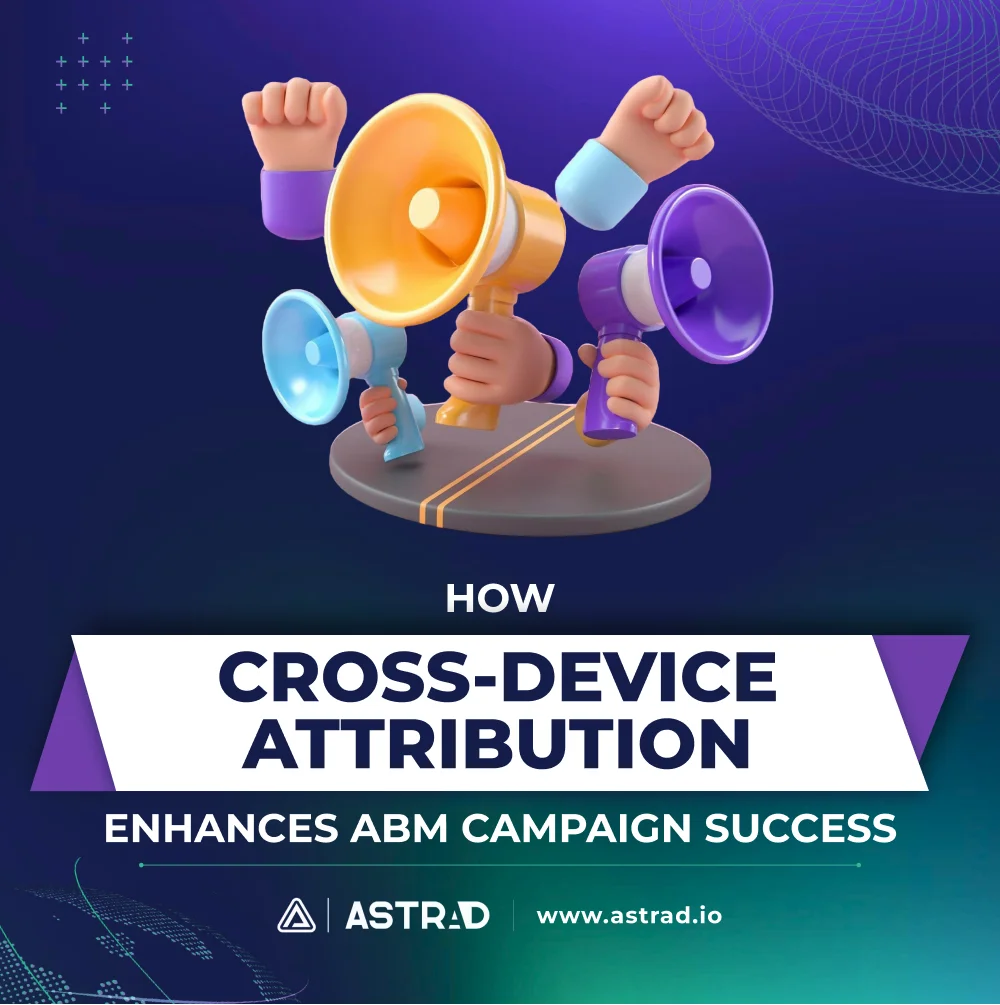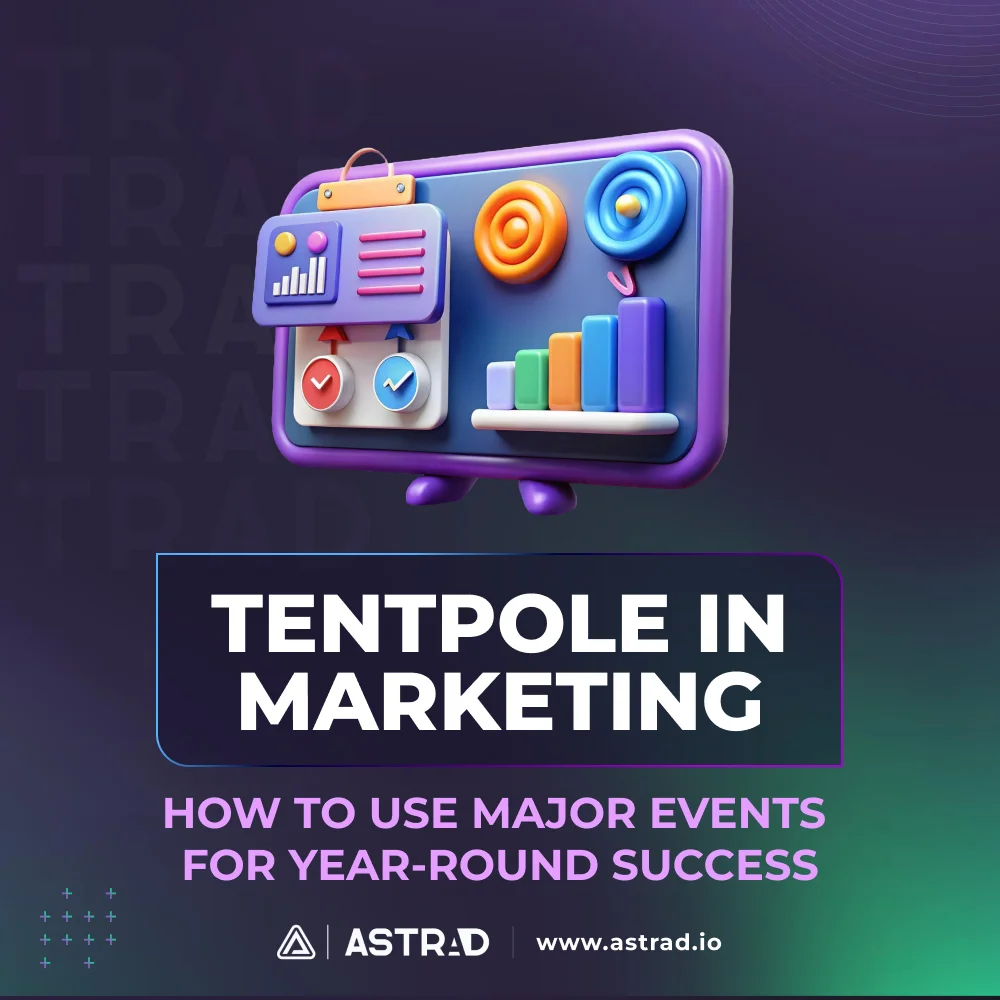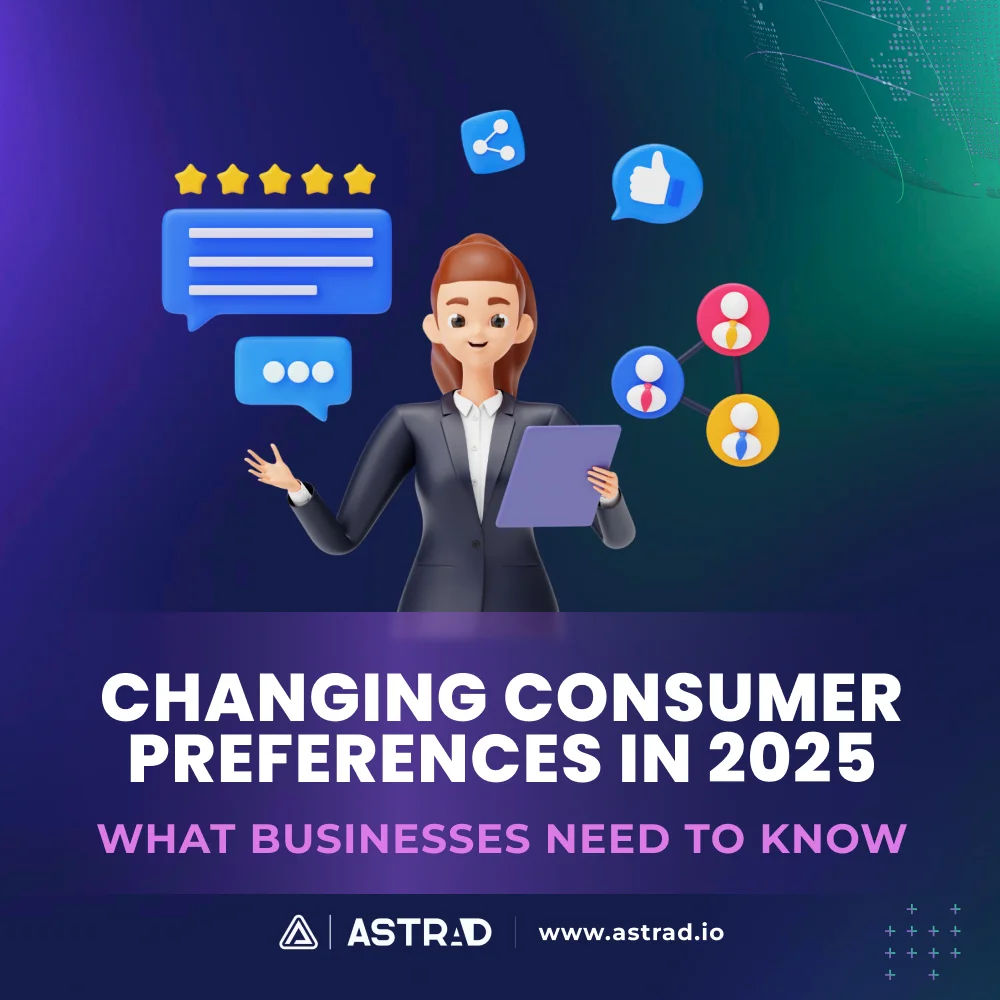Account-based marketing (ABM) is a bit like hosting a VIP-only gala — where you invite decision-makers from high-value accounts instead of blasting generic invites to everyone. It’s where you spend on fine lettering glossy paper and send out invites with the equivalent of diamond dust sprinkles just to bring in the big fishes. It’s a huge payoff — if done right.
For modern B2B marketers, ABM is the ultimate strategy for personal, targeted, and ROI-driven marketing. But—there’s always a “but”—tracking the customer journey in ABM campaigns is about as easy as herding caffeinated cats — and not just cats that have gone to Starbucks but cats that, afterward, crossed the street and decided to chuck a Red Bull just for the heck of it. Why? Because we live in an ADHD reality — and your target accounts are skipping across devices like it’s an Olympic sport.
One second, they’re on a desktop researching solutions; the next, they’re scrolling LinkedIn on their phone during a boring meeting (we’ve all been there) — or standing outside their kid’s school sneaking in some precious TikTok, Instagram, Google, and Facebook time. Hence, there is a need for something marketers have embraced: cross-device attribution.
What Is Cross-Device Attribution, and Why Should You Care?
Cross-device attribution connects the dots between the many devices your target accounts use throughout their journey. It helps marketers understand who interacted with what content on which device and when. It’s sort of like a Big Brother of digital marketing — helping you solve the whole bizarre affair of multi-device sojourns and, with it, get a better understanding of where to put your money.
In ABM, where campaigns laser-focus on specific accounts, this clarity is the ultimate game-changer. Why? Because ABM thrives on precision, and cross-device attribution offers just that—a unified view of how your target accounts interact across platforms and devices.
The Benefits of Cross-Device Attribution in ABM
Improved Campaign Insights: Know Thy Touchpoints
Ever wonder which part of your ABM campaign turned the tide? Was it the LinkedIn post on their phone or the email opened at 3 a.m. on their tablet? Was it that Instagram ad you spent on? Or that odd blog post you paid some writer on Upwork to do up? Cross-device attribution connects these seemingly random moments into a cohesive narrative — and, like that last scene in an Agatha Christie novel, gives you a whole information dump on what happened and who “the killer” is.
With these insights:
- You identify the most impactful touchpoints in the decision-making process.
- You track account activity across devices to understand key decision-makers’ behaviors.
- You can prioritize which platforms and content types are driving the most engagement.
For example, in 2018, Adobe reported a 20% increase in campaign engagement after implementing cross-device tracking to optimize their ABM initiatives. When you know which touchpoints matter, you stop wasting time on dead ends.
Enhanced ROI Measurement: No More Guesswork
One of the trickiest ABM landmines—the DMZ area of it—is proving ROI. You could send 1,000 hyper-personalized emails, but if the conversion comes from a PPC ad seen on a mobile device two days later, who gets the credit? Without cross-device attribution, your ROI math might look more like something scrawled on a barroom napkin that simply doesn’t cut it.
With attribution insights, you:
- Precisely track how various marketing efforts contribute to conversions across devices.
- Justify your ABM spend with concrete data tied to business outcomes.
In fact, a report by Medium revealed that companies using cross-device attribution models saw a 10-30% improvement in ROI on ABM campaigns. That’s not pocket change—that’s your next big campaign budget secured.
Personalized Engagement: Right Message, Right Device, Right Time
Here’s the thing: Your target accounts expect personalization, not just in content but in context. A whitepaper download on a laptop is one thing; a perfectly timed LinkedIn ad on mobile that nudges the next step? Chef’s kiss.
Cross-device attribution allows marketers to:
- Serve hyper-relevant content at the perfect stage of the buying journey.
- Tailor messages based on the device being used (e.g., mobile = short video, desktop = detailed eBook).
Let’s, for a second, visualize this exercise: You notice a key decision-maker views your case study on desktop but abandons it halfway. A few hours later, they get a push notification on mobile with a snappy summary and CTA. Boom—re-engagement.
Optimizing Resource Allocation: Smarter Spending, Bigger Results
ABM success relies on allocating resources where they’ll make the most impact. Grunt work when you’re in the foxhole is about going all gun-ho — actual strategic work is more like a sniper’s shot. Precise. Bullseye. One bullet, one target. With attribution data, you can identify the channels, devices, and content types that drive engagement and conversions—you can make that bullet count.
A real-world example? In 2020, Salesforce utilized cross-device attribution to fine-tune their ABM strategy. By focusing the budget on high-performing channels identified through attribution insights, they achieved a 40% increase in pipeline growth.
So, instead of scattering your resources like confetti, you’ll channel them like a precision-guided missile.
Cross-Device Attribution: Your ABM Superpower
B2B buying cycles are long, complex, and multi-device-driven — this chaotic maelstrom demands cross-device attribution. It’s one of the tools you simply can’t afford to be without:
- Uncover the customer journey’s hidden pathways.
- Prove the ROI of your ABM efforts with confidence.
- Deliver seamless, personalized experiences that drive conversions.
ABM marketers who ignore cross-device attribution? They’re leaving money—and data—on the table—and in an era that’s called “The Information Age,” you really can’t tell which of those losses is worse. But those who embrace it? They’re rewriting the rules of B2B marketing success.
The Future Is Bright (and Multi-Device)
As attribution technology continues to evolve, the possibilities for ABM campaigns will only grow. From AI-driven insights to even more granular cross-platform tracking, the future of cross-device attribution is packed with potential.
So, what’s next for your ABM strategy? A sharper focus. Smarter spending. And the competitive edge you need to turn your high-value accounts into high-value wins.
In marketing, knowledge equals profit. And cross-device attribution? That’s the ultimate ABM encyclopedia—one that will allow you to print money.






